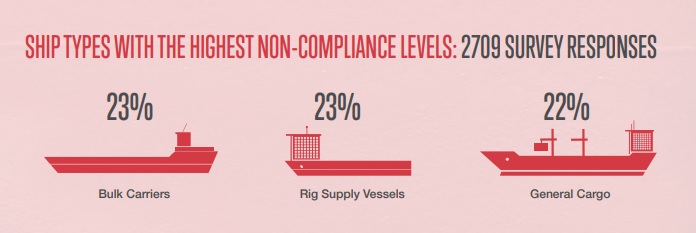In its latest Signals newsletter, North Club presents the role of pilot ladders in port operations and in crew safety, emphasizing that there are often serious incidents and fatalities to pilots during boarding operations.
As noted, boarding operations via a pilot ladder are hazardous, even when the weather is fine and all equipment is correctly maintained and deployed.
However, a study by pilots shows that vessels are not always maintaining and deploying the access arrangements in accordance with best practice, which may increase the risk of an incident.
Towards the end of 2016, The International Maritime Pilots Association (IMPA) conducted its annual pilot ladder safety survey. The aim of the survey was to monitor compliance levels and to investigate and highlight standards of pilot ladders and associated equipment.
The results indicated that despite many initiatives, designed to improve safety and awareness, the level of non-compliance has remained unchanged over the last few years and remains steady at between 15% and 20%.
Out of the 2709 survey responses, bulk carriers were highlighted as one of the ship types with the highest non-compliance levels.

Car carriers had the most positive results with only 8.24% non-compliance reported.
The top two pilot ladder defects noted related to steps not being horizontal and the ladders not resting against the ship’s hull. When a combination access was required nearly a third of all defects arose from the ladders not being secured to the vessels side.
The report notes that deteriorating standards of seamanship are concerning and result in access arrangements not being properly secured. The use of deck tongues and shackles is highlighted as a worrying trend that results in the integrity of the boarding arrangements being reliant on weak single step fittings rather than the stronger side ropes.
The Club reminds that the pilot is important to the vessels’ safety and efficiency and operators should ensure that the pilot ladder access arrangements comply with recognised best practice.






























































